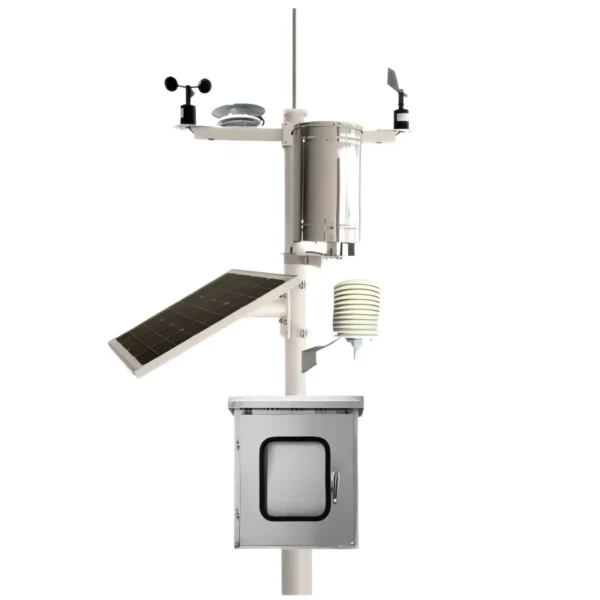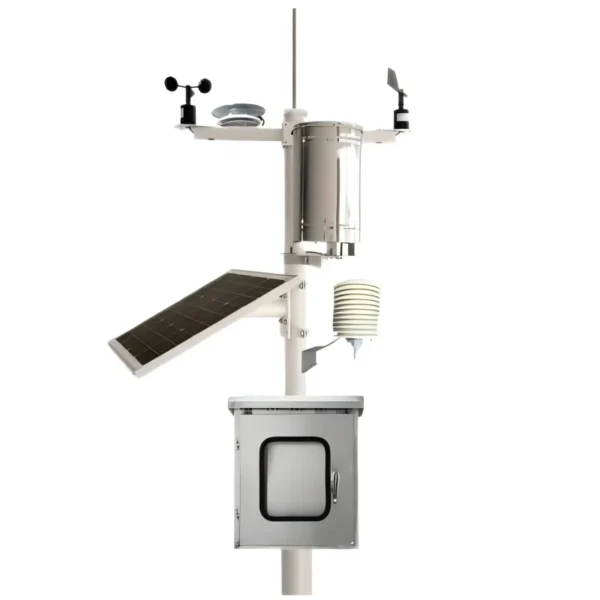
# Understanding the Functionality of Automatic Weather Stations
Automatic Weather Stations (AWS) have revolutionized the way we collect and analyze weather data. These advanced systems are designed to automatically record and transmit meteorological information without the need for constant human intervention. But what exactly is an automatic weather station, and how does it function?
## What is an Automatic Weather Station?
An Automatic Weather Station is a sophisticated system equipped with various sensors that measure atmospheric conditions such as temperature, humidity, wind speed, wind direction, rainfall, and barometric pressure. These stations are typically deployed in remote or hard-to-reach locations where manual data collection would be impractical or impossible.
## Components of an Automatic Weather Station
The core components of an AWS include:
– Sensors: These are the primary tools for measuring weather parameters. Each sensor is specialized to capture specific data, such as a thermometer for temperature or an anemometer for wind speed.
– Data Logger: This device records the data collected by the sensors. It stores the information in a digital format, making it easy to analyze and share.
– Power Supply: AWS systems are often powered by solar panels or batteries, ensuring continuous operation even in remote areas.
– Communication System: To transmit the collected data, AWS units are equipped with communication modules that can use satellite, cellular, or radio signals.
## How Does an Automatic Weather Station Work?
The functionality of an AWS can be broken down into several key steps:
– Data Collection: Sensors continuously monitor environmental conditions and gather data at regular intervals.
– Data Processing: The data logger processes the raw data, converting it into a usable format.
– Data Transmission: The processed data is then transmitted to a central database or directly to users via the communication system.
– Data Analysis: Meteorologists and researchers analyze the transmitted data to make weather forecasts, conduct climate research, and monitor environmental changes.
## Applications of Automatic Weather Stations
Automatic Weather Stations are used in a variety of fields, including:
– Agriculture: Farmers use AWS data to optimize irrigation schedules and predict weather patterns that could affect crop yields.
– Aviation: Airports rely on AWS for real-time weather updates to ensure safe takeoffs and landings.
– Disaster Management: AWS data helps in predicting and managing natural disasters like hurricanes, floods, and droughts.
– Environmental Monitoring: Researchers use AWS to track climate change and its impact on ecosystems.
## Advantages of Automatic Weather Stations
The benefits of using AWS are numerous:
– Accuracy: Automated systems reduce human error, providing more reliable data.
– Efficiency: Continuous data collection allows for real-time monitoring and quicker response to changing conditions.
– Cost-Effectiveness: Over time, AWS can be more economical than manual data collection methods, especially in remote areas.
– Scalability: AWS networks can be expanded easily to cover larger areas or more specific locations.
## Conclusion
Automatic Weather Stations are indispensable tools in modern meteorology and environmental science. By automating the collection and transmission of weather data, AWS systems provide accurate, timely, and comprehensive information that is crucial for a wide range of applications. As technology continues to advance, the capabilities and reach of these stations will only grow, further enhancing our understanding of the Earth’s atmosphere and its complex dynamics.
Keyword: what is automatic weather station

Leave A Comment